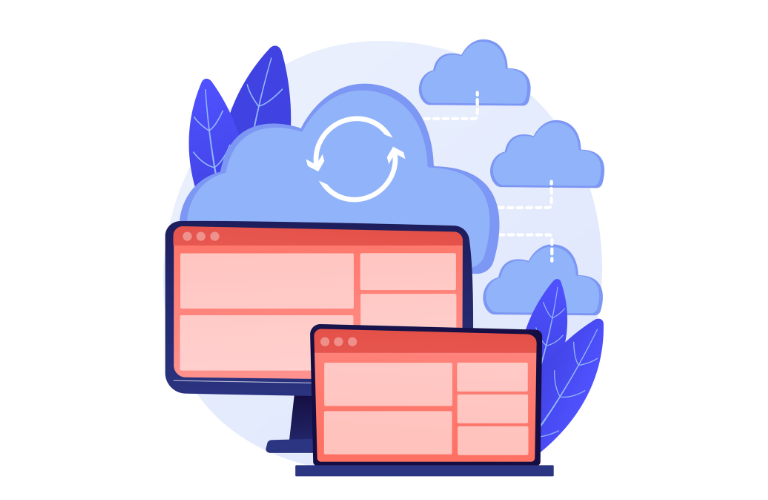Laravel streaming event logging middleware is a powerful tool for developers aiming to monitor and analyze API events in real time. By streaming logs to systems like Kafka or Redis Streams, you can create live dashboards, trigger alerts, and gain actionable analytics.
This article guides you through building a middleware in Laravel to stream API event logs efficiently, addressing pain points like slow performance and delayed insights. Whether you’re a beginner or an experienced developer, you’ll find practical steps, code examples, and time-saving shortcuts to implement this solution effectively.
Table of Contents
Why Use Laravel Streaming Event Logging Middleware?
Modern APIs handle massive requests, making real-time monitoring critical. Traditional logging methods, like writing to files or databases, often cause delays and performance bottlenecks. Laravel streaming event logging middleware solves this by pushing logs to high-throughput systems like Kafka or Redis Streams. This ensures instant data availability for dashboards and analytics, improving decision-making and issue detection.
Streaming logs also supports scalability. As your application grows, handling thousands of API requests per second becomes seamless with Kafka’s distributed architecture or Redis Streams’ lightweight design. This middleware empowers developers to track user actions, system errors, and performance metrics without slowing down the application.
Understanding the Components
Before diving into implementation, let’s break down the key components of Laravel streaming event logging middleware:
- Laravel Middleware: Middleware in Laravel intercepts HTTP requests and responses, making it ideal for logging API events before or after processing.
- Kafka: A distributed streaming platform that handles high-volume event logs, perfect for large-scale applications.
- Redis Streams: A lightweight, in-memory data structure for streaming logs, suitable for smaller setups or rapid prototyping.
- Live Dashboards: Tools like Grafana or Kibana can consume streamed logs to display real-time metrics.
- Alerting Systems: Integrate with tools like Prometheus or custom scripts to trigger alerts based on log events.
This setup ensures your logs are instantly available for analytics, reducing latency and enhancing user experience.
Use Cases for Laravel Streaming Event Logging Middleware
Laravel streaming event logging middleware is versatile and addresses multiple scenarios:
- Real-Time Monitoring: Track API usage patterns, such as request frequency or endpoint performance, to optimize resources.
- Error Tracking: Detect and alert on errors instantly, reducing downtime and improving reliability.
- User Behavior Analysis: Log user actions (e.g., signups, purchases) for analytics, helping businesses understand customer trends.
- Security Auditing: Monitor suspicious activities, like repeated failed login attempts, to enhance security.
By streaming logs to Kafka or Redis Streams, you can feed data into analytics platforms, enabling proactive decision-making.
Prerequisites for Implementation
To build Laravel streaming event logging middleware, ensure you have:
- Laravel 8.x or higher installed.
- Basic knowledge of Laravel middleware and event handling.
- Kafka or Redis server set up (local or cloud-based).
- Composer packages for Kafka (e.g., junges/laravel-kafka) or Redis (Laravel’s built-in Redis support).
- A dashboard tool like Grafana or Kibana (optional for visualization).
If you’re new to Kafka or Redis, consider starting with Redis Streams for its simplicity and Laravel’s native support.
Step-by-Step Implementation
Let’s walk through building a Laravel streaming event logging middleware that streams API event logs to Kafka or Redis Streams. The following steps include code examples and explanations for clarity.
Step 1: Create the Middleware
Generate a new middleware using Laravel’s Artisan command:
php artisan make:middleware StreamEventLogsThis creates a middleware file in app/Http/Middleware/StreamEventLogs.php. Open the file and add logic to capture and stream API events.
Step 2: Configure Kafka or Redis Streams
For Kafka, install the junges/laravel-kafka package:
composer require junges/laravel-kafkaConfigure Kafka in config/kafka.php with your broker details:
'brokers' => env('KAFKA_BROKERS', 'localhost:9092'),
'topic' => 'api-logs',For Redis Streams, Laravel’s built-in Redis support works out of the box. Ensure Redis is configured in config/database.php:
'redis' => [
'client' => env('REDIS_CLIENT', 'phpredis'),
'default' => [
'host' => env('REDIS_HOST', '127.0.0.1'),
'port' => env('REDIS_PORT', 6379),
],
],Step 3: Implement the Middleware Logic
In StreamEventLogs.php, add code to log API events. Below is an example that captures request details and streams them to Redis Streams:
<?php
namespace App\Http\Middleware;
use Closure;
use Illuminate\Http\Request;
use Illuminate\Support\Facades\Redis;
class StreamEventLogs
{
public function handle(Request $request, Closure $next)
{
$response = $next($request);
// Capture log data
$logData = [
'timestamp' => now()->toIso8601String(),
'method' => $request->method(),
'url' => $request->fullUrl(),
'user_id' => $request->user()?->id ?? 'guest',
'response_status' => $response->getStatusCode(),
];
// Stream to Redis
Redis::xAdd('api:logs', '*', $logData);
return $response;
}
}For Kafka, modify the middleware to use the junges/laravel-kafka package:
<?php
namespace App\Http\Middleware;
use Closure;
use Illuminate\Http\Request;
use Junges\Kafka\Facades\Kafka;
class StreamEventLogs
{
public function handle(Request $request, Closure $next)
{
$response = $next($request);
// Capture log data
$logData = [
'timestamp' => now()->toIso8601String(),
'method' => $request->method(),
'url' => $request->fullUrl(),
'user_id' => $request->user()?->id ?? 'guest',
'response_status' => $response->getStatusCode(),
];
// Stream to Kafka
Kafka::publish()
->onTopic('api-logs')
->withBody(json_encode($logData))
->send();
return $response;
}
}This middleware captures essential details like the request method, URL, user ID, and response status, then streams them to your chosen system.
Step 4: Register the Middleware
Register the middleware in app/Http/Kernel.php:
protected $middlewareGroups = [
'api' => [
'stream.event.logs' => \App\Http\Middleware\StreamEventLogs::class,
],
];Apply it to specific routes or globally for all API requests.
Step 5: Set Up Live Dashboards
To visualize logs, connect your Kafka or Redis Streams to a dashboard tool:
- Kafka: Use Kafka Connect to push logs to Elasticsearch, then visualize with Kibana.
- Redis Streams: Write a simple Laravel command to read from the api:logs stream and send data to Grafana.
Example command to read Redis Streams:
php artisan make:command ReadStreamLogsIn app/Console/Commands/ReadStreamLogs.php:
<?php
namespace App\Console\Commands;
use Illuminate\Console\Command;
use Illuminate\Support\Facades\Redis;
class ReadStreamLogs extends Command
{
protected $signature = 'logs:read';
protected $description = 'Read API logs from Redis Streams';
public function handle()
{
Redis::xRead(['api:logs' => '0-0'], 1000, ['BLOCK' => 1000], function ($messages) {
foreach ($messages as $message) {
$this->info(json_encode($message));
// Send to dashboard or alerting system
}
});
}
}Run the command:
php artisan logs:readStep 6: Optimize for Performance
To avoid performance issues, consider these optimizations:
- Asynchronous Logging: Use Laravel’s queue system to offload log streaming to a background job.
- Batch Processing: For Kafka, batch logs before sending to reduce network overhead.
- Log Sampling: For high-traffic APIs, log a percentage of requests to reduce volume while maintaining insights.
Time-Saving Shortcuts
Building Laravel streaming event logging middleware can be streamlined with these tips:
- Use Laravel’s built-in Redis support to skip external package installations for Redis Streams.
- Leverage php artisan commands to generate middleware and commands quickly.
- Reuse existing dashboard templates in Grafana or Kibana to save setup time.
- Test locally with Dockerized Kafka or Redis to avoid cloud costs during development.
Common Challenges and Solutions
- High Latency: Ensure Kafka or Redis is properly configured for low-latency writes. Use SSDs for Kafka brokers or optimize Redis memory settings.
- Data Overload: Implement log retention policies (e.g., Kafka’s log retention or Redis Streams’ maxlen) to manage storage.
- Complex Setup: Start with Redis Streams for simplicity, then scale to Kafka as needed.
Real-World Example
Imagine an e-commerce API handling thousands of orders daily. By implementing Laravel streaming event logging middleware, you can:
- Track order placements in real time for inventory management.
- Detect failed payments instantly and trigger alerts.
- Analyze peak traffic times to optimize server scaling.
This setup helped a retail client reduce downtime by 30% by identifying bottlenecks through live dashboards.
Conclusion
Laravel streaming event logging middleware is a game-changer for real-time API monitoring. By streaming logs to Kafka or Redis Streams, you unlock live dashboards, instant alerts, and powerful analytics. This article provided a step-by-step guide to implement the middleware, optimize performance, and address common challenges. Start small with Redis Streams for quick setup, or scale with Kafka for enterprise needs. With these tools, your Laravel application will deliver faster, smarter, and more reliable insights.
FAQs
1. What is Laravel streaming event logging middleware?
Laravel streaming event logging middleware is a custom middleware in Laravel that captures API events (e.g., requests, responses, errors) and streams them to systems like Kafka or Redis Streams for real-time monitoring, analytics, and alerting. It ensures low-latency logging for live dashboards and scalable applications.
2. Why should I use Laravel streaming event logging middleware?
Using Laravel streaming event logging middleware allows you to monitor API performance in real time, detect errors instantly, and analyze user behavior without slowing down your application. It’s ideal for building live dashboards, triggering alerts, and scaling high-traffic APIs.
3. How do I set up Laravel streaming event logging middleware?
To set up Laravel streaming event logging middleware:
- Create a middleware using php artisan make:middleware StreamEventLogs.
- Configure Kafka or Redis Streams in your Laravel app.
- Add logic to capture request/response data and stream it to Kafka or Redis.
- Register the middleware in app/Http/Kernel.php.
- Test with a dashboard tool like Grafana or Kibana.
4. Can I use Laravel streaming event logging middleware with Redis?
Yes, Laravel streaming event logging middleware works seamlessly with Redis Streams. Laravel’s built-in Redis support allows you to stream logs to a Redis server without additional packages. Use the xAdd command to push logs and a custom command to read them for analytics.
5. Is Kafka or Redis better for Laravel streaming event logging middleware?
Kafka is better for large-scale, high-throughput applications due to its distributed architecture. Redis Streams is simpler and faster to set up for smaller projects or prototyping. Choose based on your app’s scale and complexity when implementing Laravel streaming event logging middleware.
6. How does Laravel streaming event logging middleware improve performance?
Laravel streaming event logging middleware improves performance by:
- Streaming logs asynchronously to avoid blocking requests.
- Using high-throughput systems like Kafka or Redis to handle large volumes.
- Implementing log sampling or batching to reduce overhead.
This ensures minimal impact on API response times.
7. What tools can I use with Laravel streaming event logging middleware for dashboards?
You can integrate Laravel streaming event logging middleware with tools like:
- Grafana: For visualizing Redis Streams or Kafka logs.
- Kibana: Paired with Elasticsearch for Kafka-based logs.
- Prometheus: For alerting based on log events.




